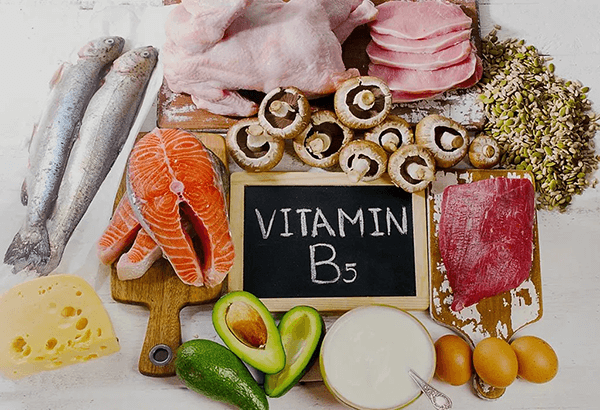- +033 2572 7171
- info@dhanvantary.com

4.5 Rating | 4500 Review

4.5 Rating | 4500 Review
Vitamin B5 is a water-soluble vitamin that belongs to the B vitamin family, playing a crucial role in the conversion of food into energy within the body. This vitamin is abundant in numerous natural food sources. The term "Pantothenic" translates to "from everywhere," reflecting its widespread presence in various foods.

Pantothenic acid is integral to all living cells and is essential for metabolism, functioning as a component of coenzyme A (CoA). It can be found in yeasts, molds, bacteria, as well as in both plant and animal cells, including human blood plasma and lymphatic fluid. Additionally, it is located in the intestinal wall.
Vitamin B5 is available in a diverse array of food sources, including mushrooms, shiitake mushrooms, fresh meats, kale, corn, broccoli, tomatoes, avocados, legumes, cauliflower, soybeans, egg yolks, sweet potatoes, sunflower seeds, whole grain breads and cereals, wheat germ, yeast, and salmon.
This vitamin offers numerous health advantages for the human body. As coenzyme A, it is present in all living cells and is vital for various biochemical processes.
It contributes to the maintenance of a healthy nervous system, as well as the well-being of the eyes, skin, hair, liver, and digestive system. Additional functions encompass the formation of red blood cells, the production of adrenal and sex hormones, and assistance in the synthesis of cholesterol and other vitamins, including vitamin B2 (riboflavin).
Vitamin B5 deficiency is an uncommon condition, typically observed in individuals experiencing severe malnutrition. The following are the prevalent signs and symptoms associated with a deficiency of vitamin B5:
Vitamin B5 does not generally produce side effects, as it is a water-soluble vitamin, and any excess is excreted by the body. However, in rare instances of excessive intake, diarrhea may occur.
The recommended dosage varies according to age and gender, as outlined below:
